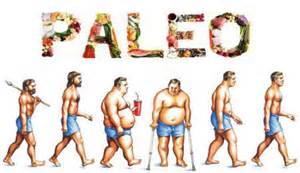
Fish is an essential part of a healthy diet. Fish is a good source of protein and certain fish varieties contain essential Omega 3 fatty acid, which are beneficial for cardiovascular health. There have been numerous studies supporting this claim. A recent study has shown that fish consumption reduces the likelihood of developing diabetes. Whether you are a vegetarian or a meat eater, fish plays a fundamental role in a Mediterranean diet.
Salmon
One of the most popular and healthy ways to eat fish is by incorporating it into your daily diet. Salmon and other fish are delicious and a good source of omega-3 fat acids. These fatty acids are great for your heart and help reduce inflammation. Baking salmon is an easy way to get omega-3 fats in your diet, without spending too much time in the kitchen.
White fish
The Mediterranean diet is rich in fish, including white fish. These fish contain high levels of omega-3 fatty oils that reduce inflammation and lower cholesterol. White fish, eggs, and shellfish are all excellent sources of protein. Olive oil, which is the main fat source, is preferred over red meat and poultry. Polyunsaturated fats are encouraged in the Mediterranean diet, while saturated fats are avoided.
Shellfish

There are many benefits to eating seafood, especially shellfish in the Mediterranean diet. These types of foods can help lower blood pressure, reduce cholesterol, and prevent blood from clotting. These foods may also lower your risk of stroke and heart disease. Wine is frequently associated with Mediterranean cuisine. Although wine is safe when consumed in moderation, there are some risks. Mediterranean diet encourages whole grains, vegetables, fish, and other healthy foods. Olive oil is used instead of butter for cooking and other purposes. Other benefits of the Mediterranean diet include a lifestyle of physical activity and a common meal with friends and family.
White tuna
If you're on a Mediterranean diet, you've probably noticed the inclusion of white tuna in the menu. White tuna is high in protein and, unlike other fish, has very few calories. It can be eaten as part of a light meal because it has been cooked. And it's packed with nutrition, too! This is how you can incorporate this fish into your Mediterranean-style diet.
White tuna steak
A white tuna steak is low in saturated fat compared to sirloin and has anti-inflammatory omega-3 fatty acids, making it an excellent choice for a Mediterranean diet. Tuna fillets are also higher in protein than sirloin making them a better choice for those who follow a healthy diet. Sicilian tuna steaks served with simple Sicilian sauce consisting of tomatoes, white wine, capers, and capers.
White tuna salad
White tuna salad can be a staple part of the Mediterranean diet. You can prepare it in just 15 minutes with pantry staples. It can also be used as a light main meal and only requires a few extra ingredients. For another tasty and quick salad recipe, try the Mediterranean Kale Salad. This recipe is also part the Mediterranean diet. You can prepare it ahead of time and keep it in the fridge.
White tuna tacos

U.S. News & World Report ranked Mediterranean diet as the best for health. Hundreds of studies have found that Mediterranean people live longer and have lower cholesterol and blood pressure. This is because the Mediterranean people follow a similar eating pattern and enjoy a variety of foods. Tuna, for instance, is considered a low-calorie fish. It is also rich with omega-3 fatty acids.
FAQ
How do I motivate to cook?
Cooking is fun when you share food with family and friends. Cooking for one is easier than cooking for another. You can be inspired to cook if you try something new. This will help you learn about new techniques and ingredients. Additionally, you can learn about new ingredients and techniques by incorporating recipes from different cultures into your cooking.
Can I learn to cook with my kids?
Yes! Yes! It's an enjoyable activity that teaches responsibility and teamwork. From washing vegetables to chopping onion, children can help. If your children follow safe practices when handling knives, they will enjoy helping you cook.
How Much Does it Cost to Learn Culinary Arts Skills?
It is not easy to find a culinary arts degree that costs less than $40,000. A four-year degree usually costs around $40,000. A two year associate's degree might cost less than $5,000. Tuition costs vary depending on which program you choose. The prices charged by private institutions are generally higher than the public.
What should a novice cook do first?
A beginner should start cooking something easy, like pasta, rice, or soup. Learn how to cook with a recipe book, YouTube video or other resources. Cooking can be fun when done with a partner. Have a group of friends cook, or cook together.
Can you learn to cook on your own?
Self-taught cooking is possible! The joy of cooking is something that everybody enjoys doing, no matter their skill level. If you are interested in learning how to cook, start cooking at home. You can start small by making spaghetti sauce for dinner or pancakes for breakfast. It is important to experiment with new recipes to learn how to cook. It is possible to make mistakes.
Cooking can take anywhere from a few hours to several months depending on the skill level. It's important to remember that cooking isn't just about following recipes. There are many ways of cooking food. So if you have an idea for a recipe, use it.
Statistics
- You'll be amazed that over 90% of CIA students receive scholarships and grants to finish their culinary studies. (ischoolconnect.com)
- In the United States, the category is estimated at $23.2 billion annually and is growing faster than the market. (washingtonpost.com)
- under 10 Kids have been taught that there is special food just for them, and Fiese says that 10 percent of kids will throw a tantrum if they don't get the food they want. (washingtonpost.com)
External Links
How To
How to make an omelet that is perfect
Omelets is one of my favourite breakfast foods. But how do you create them perfectly? I've tried many recipes and different methods but none have worked. So today, I want to share some tips and tricks with you so you can make your own delicious and fluffy omelets every morning.
When making omelets, it is important to be aware that eggs can be temperamental. It is important that eggs are fresh from an organic market and kept cool until used. If they are not kept cold enough, the whites won’t form properly. The yolks will also break down too quickly and become runny. Your omelets will look strangely colored if this happens. If you're going to cook them immediately, it is best if the eggs are still warm.
Another tip is to separate the egg before adding it to the pan. The yolk and white should not be mixed together as this can cause the omelet's curdle.
The bottom part of an egg that is added directly to the stovetop might be burned, which could cause a ruined texture in your omelet. Instead, heat the egg for 10 seconds in the microwave before placing it in the pan. The microwave heat cooks your egg just right, without it becoming too soft.
Next, let's talk about mixing the eggs. Mix eggs well together. To do this, take the bowl from the mixer and flip it upside-down. Then shake the bowl vigorously. The egg will be thoroughly mixed in the bowl as the air is whipped.
The fun part begins - you need to pour the milk into your mixture. Mix half of the milk with the eggs. Then fold the eggs in half into the remaining milk. Do not worry if you see streaks of egg; they will disappear when the omelet is flipped.
After you have done folding the eggs, heat the pan on medium heat. The oil will start to smoke. Once the oil starts getting hot, add 1/4 cup of butter to the pan and swirl it around to coat the entire surface of the pan. Next, carefully open the lid and sprinkle salt into your pan. A pinch of salt will prevent your omelet from sticking in the pan.
Cover the pan once the omelet is formed and allow it to cool completely. Flip the omelet upside down or with a spatula. Cook the second side for a minute or so. Serve the omelet immediately by removing it from the pan.
This recipe is best when used with whole milk. But, you can use skimmed milk as well.